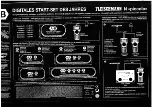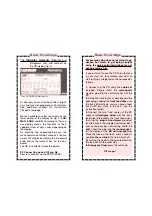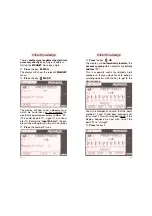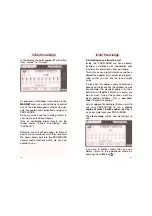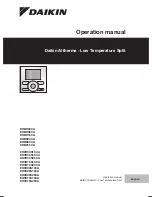
We will use an electrical receiver module
6852 (=not contained in the start set) which
has 4 output connection ready for use. Once
we have connected them up according to
their instruction leaflets, we are ready to
opeate them using the PROFI-BOSS.
➙
Press
the key in order to access the
MAG
menu.
The display will show 10 symbolic points,
numbered
1
to
10
, of which the solid, vertical
track section shows the straight on setting.
In adition the display is showing
MAGNET
, to
indicate magnetically operated accessories.
Underneath, there are still
4 menus
for selec-
tion.
Using the key (=HOME) you can get
back to operational mode.
Using the key (=upwards) you can se-
lect the next batch of ten points, num-
bered 11 -20.
If you press yet again, you will get the next
batch of ten each time you press.
17
The points and uncouplers from the start set
are delivered as manually operated.
These must be converted to
electrical oper-
ation
by clipping on the
electro-magnetic
motor. Point motors and uncoupler motors
do not have their own decoder, and must be
connected into an
electrical accessory
receiver module, article no. 6852.
(Alternative connection possibilites are
shown in the later chapter marked
”Expert
Knowledge“
).
Once these are installed on your layout,
(conections for points, uncouplers to the
receiver module are shown in the relevant,
accompanying instruction leaflet) then they
can be controlled using the PROFI-BOSS.
Please Note: The PROFI-BOSS allows func-
tions to be operated
parallel to the running
operations.
This means that the trains will
not need to be stopped in order to change
points or other electrical accessories, or loco
functions, etc.
At any time, you can
return to the running
operations
by using the
....
as a home key,
i.e. to turn the lights on/off. The control
knob is always available to alter the
speed.
Further information can be found in the later
chapter marked
”Expert Knowledge“.
First of all we will find out how to
switch the
points.
We will use an example 2 points and 2
uncouplers (= contents of a start set).
16
Initial Knowledge
Initial Knowledge


